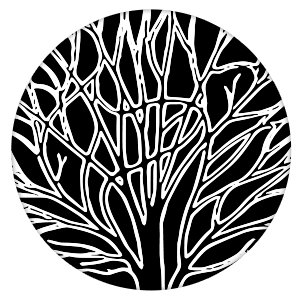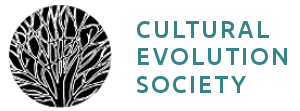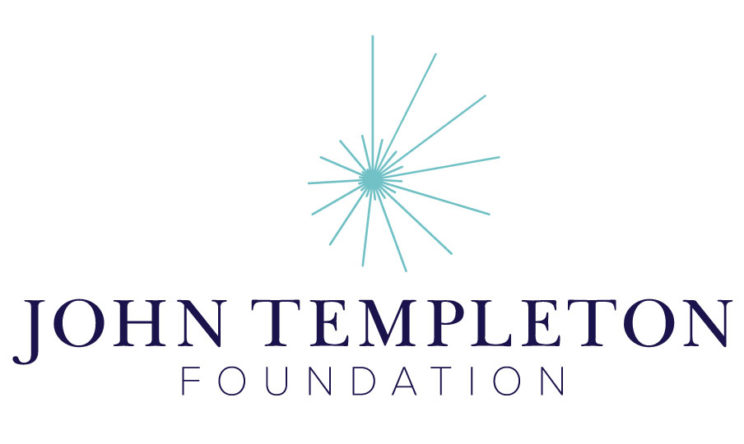Foundations of Cultural Evolution
Reading lists
Readings for the module are listed by lecture.
Lecture 1
References cited
Barnard, C. J. & Sibley, R. M. 1981 Producers and scroungers: a general model and its application to captive flocks of house sparrows. Anim. Behav. 29, 543–550.
Boyd, R., & Richerson, P. J. (1995). Why Does Culture Increase Human Adaptability? Ethology and Sociobiology, 16(2), 125-143.
Rogers, A. R. (1988). Does Biology Constrain Culture? American Anthropologist, 90(4), 819-831
Additional readings about social learning and Roger's Paradox
Boyd, R., & Richerson, P. J. (1996). Why culture is common, but cultural evolution is rare. In W. Runciman, J. Maynard Smith, & R. Dunbar (Eds.), Evolution of social behaviour patterns in primates and man (Vol. 88, pp. 77-93). Oxford: Oxford University Press.
Enquist, M., Eriksson, K., & Ghirlanda, S. (2007). Critial Social Learning: A Solution to Roger's Paradox of Nonadaptive Culture. American Anthropologist, 109(4), 727-734.
Lecture 2
References cited
Henrich, J., & McElreath, R. (2003). The evolution of cultural evolution. Evolutionary Anthropology: Issues, News, and Reviews, 12(3), 123-135.
Additional readings about payoff-bias and the adoption of behaviors
Chudek, M., Heller, S., Birch, S., & Henrich, J. (2012). Prestige-biased cultural learning: bystander's differential attention to potential models influences children's learning. Evolution and Human Behavior, 33(1), 46-56.
Henrich, J., & Gil-White, F. J. (2001). The evolution of prestige: Freely conferred deference as a mechanism for enhancing the benefits of cultural transmission. Evolution and human behavior, 22(3), 165-196.
Kendal, J., Giraldeau, L. A., & Laland, K. (2009). The evolution of social learning rules: payoff-biased and frequency-dependent biased transmission. Journal of Theoretical Biology, 260(2), 210–219.
Rogers, E. M. (2003). Diffusion of innovations (5th ed.). New York: Free Press.
Lecture 3
References cited
Henrich, J., & McElreath, R. (2003). The evolution of cultural evolution. Evolutionary Anthropology: Issues, News, and Reviews, 12(3), 123-135."
Additional readings about payoff-bias and the adoption of behaviors
Efferson, C., Lalive, R., Richerson, P. J., McElreath, R., & Lubell, M. (2008). Conformists and mavericks: The empirics of frequency-dependent cultural transmission. Evolution and Human Behavior, 29(1), 56–64.
Kendal, J., Giraldeau, L. A., & Laland, K. (2009). The evolution of social learning rules: payoff-biased and frequency-dependent biased transmission. Journal of Theoretical Biology, 260(2), 210–219.
Henrich, J., & Boyd, R. (2001). Why people punish defectors. Weak conformist transmission can stabilize costly enforcement of norms in cooperative dilemmas. Journal of Theoretical Biology, 208(1), 79–89.
Whiten, A., Horner, V., & de Waal, F. B. M. (2005). Conformity to cultural norms of tool use in chimpanzees. Nature, 437(7059), 737–740.
Whitehead, H., & Richerson, P. J. (2009). The evolution of conformist social learning can cause population collapse in realistically variable environments. Evolution and Human Behavior, 30(4), 261–273.
Lecture 4
References cited
Cavalli-Sforza, L. L., & Feldman, M. W. (1981). Cultural transmission and evolution : a quantitative approach. Princeton, N.J.: Princeton University Press.
McElreath, R., & Strimling, P. (2008). When Natural Selection Favors Imitation of Parents. Current Anthropology, 49(2), 307–316.
Additional readings about transmission pathways
Allen, J., Weinrich, M., Hoppitt, W., & Rendell, L. (2013). Network-based diffusion analysis reveals cultural transmission of lobtail feeding in humpback whales. Science, 340(6131), 485-488.
Hewlett, B. S., & Cavalli-Sforza, L. L. (1986). Cultural transmission among Aka pygmies. American Anthropologist, 88(4), 922-934.
Krützen, M., Mann, J., Heithaus, M. R., Connor, R. C., Bejder, L., & Sherwin, W. B. (2005). Cultural transmission of tool use in bottlenose dolphins. Proceedings of the National Academy of Sciences, 102(25), 8939-8943.
Reyes-García, V., Broesch, J., Calvet-Mir, L., Fuentes-Peláez, N., McDade, T. W., Parsa, S., ... & TAPS Bolivian Study Team. (2009). Cultural transmission of ethnobotanical knowledge and skills: an empirical analysis from an Amerindian society. Evolution and human behavior, 30(4), 274-285.
Tehrani, J. J., & Collard, M. (2009). On the relationship between interindividual cultural transmission and population-level cultural diversity: a case study of weaving in Iranian tribal populations. Evolution and Human Behavior, 30(4), 286-300.
Lecture 5
References cited
*McElreath, R., & Strimling, P. (2008). When natural selection favors imitation of parents. Current Anthropology, 49(2), 307-316.
Reyes-García, V., Gallois, S., & Demps, K. (2016). A Multistage Learning Model for Cultural Transmission: Evidence from Three Indigenous Societies. In H. Terashima & B. S. Hewlett (Eds.), Social Learning and Innovation in Contemporary Hunter-Gatherers: Evolutionary and Ethnographic Perspectives (pp. 47–60). Springer.
Further readings about transmission along the life cycle
Demps, K., Zorondo-Rodríguez, F., García, C., & Reyes-García, V. (2012). Social learning across the life cycle: cultural knowledge acquisition for honey collection among the Jenu Kuruba, India. Evolution and Human Behavior, 33(5), 460-470.
Newson, L., Postmes, T., Lea, S. G., & Webley, P. (2005). Why are modern families small? Toward an evolutionary and cultural explanation for the demographic transition. Personality and social psychology review, 9(4), 360-375.
Lecture 6
References cited
Mesoudi, A., Whiten, A., & Dunbar, R. (2006). A bias for social information in human cultural transmission. British Journal of Psychology, 97(3), 405–423.
Some readings about content biases
Acerbi, A., & Bentley, R. A. (2014). Biases in cultural transmission shape the turnover of popular traits. Evolution and Human Behavior, 35(3), 228-236.
Acerbi, A., Kendal, J., & Tehrani, J. J. (2017). Cultural complexity and demography: The case of folktales. Evolution and human behavior, 38(4), 474-480.
Mesoudi, A., & Whiten, A. (2008). The multiple roles of cultural transmission experiments in understanding human cultural evolution. Philosophical Transactions of the Royal Society B: Biological Sciences, 363(1509), 3489-3501.
Lecture 7
References cited
Rogers, E. M. (1962). Diffusion of Innovations. New York.
Some readings about diffusion curves and social learning
Franz, M., & Nunn, C. L. (2009). Network-based diffusion analysis: a new method for detecting social learning. Proceedings of the Royal Society B: Biological Sciences, 276(1663), 1829-1836.
Henrich, J. (2001). Cultural transmission and the diffusion of innovations: Adoption dynamics indicate that biased cultural transmission is the predominate force in behavioral change. American Anthropologist, 103(4), 992-1013.
Kandler, A., Wilder, B., & Fortunato, L. (2017). Inferring individual-level processes from population-level patterns in cultural evolution. Royal Society open science, 4(9), 170949.
Reader, S. M., & Laland, K. N. (2000). Diffusion of foraging innovations in the guppy. Animal Behaviour, 60(2), 175-180.
Lecture 8
References cited
Henrich, J. (2004). Demography and cultural evolution: How adaptive cultural processes can produce maladaptive losses—The Tasmanian case. American Antiquity, 69(2), 197–214.
Additional readings about the evolution of cultural complexity
Bell, A. V. (2015). Linking Observed Learning Patterns to the Evolution of Cultural Complexity. Current Anthropology, 56(2), 277–281.
Bell, A. V., & Hernandez, D. (2017). Cooperative Learning Groups and the Evolution of Human Adaptability. Human Nature, 28(1), 1–15.
Derex, M., & Boyd, R. (2016). Partial connectivity increases cultural accumulation within groups. Proceedings of the National Academy of Sciences, 113(11), 2982-2987.
Kline, M. A., & Boyd, R. (2010). Population size predicts technological complexity in Oceania. Proceedings of the Royal Society B: Biological Sciences, 277, 2559–2564.
Lecture 9
References cited
Boyd, R., & Richerson, P. J. (2002). Group beneficial norms can spread rapidly in a structured population. Journal of Theoretical Biology, 215(3), 287-296.
Additional readings about equilibrium selection
Boyd, R., & Richerson, P. J. (1990). Group selection among alternative evolutionarily stable strategies. Journal of Theoretical Biology, 145(3), 331-342.
Boyd, R., & Richerson, P. J. (2009). Voting with your feet: Payoff biased migration and the evolution of group beneficial behavior. Journal of Theoretical Biology, 257(2), 331-339.
Lecture 10
References cited
Bell, A. V., Richerson, P. J., & McElreath, R. (2009). Culture rather than genes provides greater scope for the evolution of large-scale human prosociality. Proceedings of the National Academy of Sciences, 106(42), 17671-17674.
Handley, C. and Mathew, S. Human large-scale cooperation as a product of competition between cultural groups. Nature Communications 11, 702 (2020).
Price, G. R. (1970). Selection and covariance. Nature, 227(5257), 520-521.
McElreath, R., & Boyd, R. (2008). Mathematical models of social evolution: A guide for the perplexed. University of Chicago Press.
Additional readings about cultural group selection
Bell, A. V., Richerson, P. J., & McElreath, R. (2009). Culture rather than genes provides greater scope for the evolution of large-scale human prosociality. Proceedings of the National Academy of Sciences, 106(42), 17671-17674.
Muthukrishna, M., Bell, A. V., Henrich, J., Curtin, C., Gedranovich, A., McInerney, J., & Thue, B. (forthcoming). Beyond WEIRD Psychology: Measuring and Mapping Scales of Cultural and Psychological Distance. Psychological Science.
Richerson, P., Baldini, R., Bell, A. V., Demps, K., Frost, K., Hillis, V., ... & Ross, C. (2016). Cultural group selection plays an essential role in explaining human cooperation: A sketch of the evidence. Behavioral and Brain Sciences, 39.
Lecture 11
References cited
Turchin, P. (2018). Historical dynamics: Why states rise and fall. Princeton University Press.
Additional readings about the evolution of sociopolitical cultural systems
Turchin, P., Currie, T. E., Turner, E. A., & Gavrilets, S. (2013). War, space, and the evolution of Old World complex societies. Proceedings of the National Academy of Sciences, 110(41), 16384-16389.
Turchin, P., Brennan, R., Currie, T. E., Feeney, K. C., Francois, P., Hoyer, D., ... & Peregrine, P. (2015). Seshat: The global history databank. Cliodynamics: The Journal of Quantitative History and Cultural Evolution.
This project was supported by Grant #61105 from the John Templeton Foundation to the University of Tennessee, Knoxville (PIs: S. Gavrilets and P. J. Richerson) with assistance from the Center for the Dynamics of Social Complexity and the National Institute for Mathematical and Biological Synthesis at the University of Tennessee, Knoxville.

The Cultural Evolution Society's Online Learning Tutorial Series is licensed under a Creative Commons Attribution-NonCommercial-ShareAlike 4.0 International License. For designers' contact information, click here.



